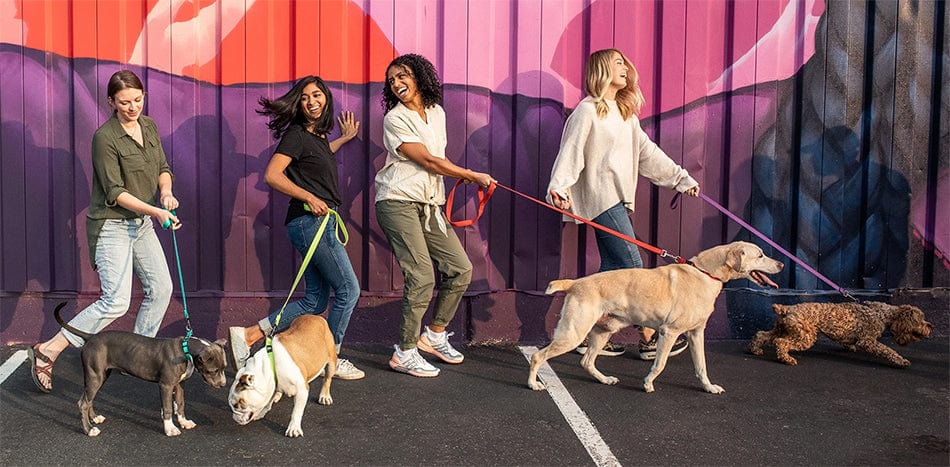Your cart is empty. Let's fix that!


No pawrent is spared from having pet hair sprinkled on everything they own. With the exception of hairless dogs, all dogs shed. Even hypoallergenic dogs like labradoodles shed, although they shed much less than double coated breeds like huskies.
All animals with hair (including humans) shed on a regular basis. So if you’re wondering when will my dog stop shedding, we hate to be the bearer of bad news...but the answer is never. Shedding is part of the natural life cycle of hair shafts within the follicles. Hair goes through phases of growth and shedding; dead hairs are shed to make room for fresh, new growth. We cover the top 5 reasons dogs shed below, starting with...
Just as we change our wardrobes seasonally, dogs must also adapt to temperature changes. Most dogs will shed extra during spring and fall. However, you may notice your dog shedding in the colder months and find yourself asking how long do dogs shed their winter coat? The answer is that many dogs shed their lightweight coats to make room for their protective winter coats. Humans can relate by swapping out a light cardigan for a heavy parka. So while it may be strange to see your dog shedding in winter, chances are it is perfectly normal.
Just like their humans, stress can cause dogs to lose their hair. A change in schedule, or new people or animals living in the household can emotionally impact your dog and cause them stress. In addition to excess shedding, your dog may show other signs of anxiety, like having accidents, eating more or less than usual, whining or crying, or even being destructive.
Your doggo’s health may be reflected in their shedding rate, so you should pay attention to any unexplained excessive shedding. Endocrine diseases, skin disorders, nutritional or vitamin deficiencies, and other disorders can cause hair loss or change the rate of hair growth in your dog. Hormonal fluctuations can also cause female dogs to shed more after a heat cycle. You should contact your vet if the rate of shedding seems out of the ordinary for your dog.
Dehydration is a big one – not getting enough water can lead to dry skin, one of the major factors in excessive shedding. Your pup should always have more than enough fresh water available; staying hydrated is incredibly important, even in cooler months.
Regardless of the type of hair your dog has, brushing is an important part of good hygiene. Routine grooming (some dogs require brushing every day) is absolutely essential for all dogs. Brushing or combing your dog helps to remove dead hairs before they end up on every square inch of your home. Brushing helps to distribute healthy, natural oils produced by the skin throughout your dog’s coat, which helps hairs stay in place on your dog, not on your floor. Bathe your dog regularly, but only use dog shampoo, as human shampoo is too harsh and will irritate Fido’s skin.
Since diet plays a huge role in your dog’s overall health, nutritious food is important. There are even specialty noms made precisely to promote a healthy, shiny coat! Some dogs with food allergies are prone to diet-related shedding, these pups can benefit from a protein-rich and grain-free food to improve their dry skin and reduce shedding.
The best thing you can do for your dog’s health and your own sanity is to maintain a regular schedule of brushing and grooming, as well as keeping your dog hydrated and providing them with nutritious food. Pay close attention to anything that could be causing them stress or impacting their health. At the end of the day, the puppy eyes and wet kisses are well worth the dog hair, just make sure you stock up on lint rollers!
Updated November 12, 2024